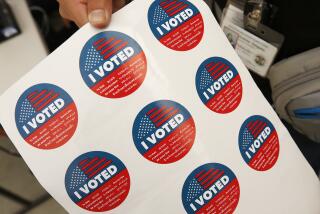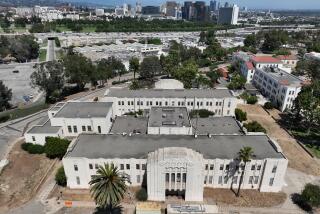Police Dispatch Center Dedicated
The city took another step Monday in its arduous campaign to open two new emergency dispatch centers by holding a dedication ceremony at the San Fernando Valley facility, a month after a similar ceremony was held for a center downtown.
However, officials say the centers will not be operational for another two years when all the hardware and software technology is installed.
The 56,000-square-foot Valley Communications Dispatch Center in West Hills will be a far cry from the subterranean dispatch complex at the Los Angeles Police Department’s downtown Parker Center. The spacious and brightly lighted West Valley building was designed to keep employees comfortable and to withstand a magnitude 8.3 earthquake.
“There are windows here,” said Cynthia Glover, a police service representative who has been taking emergency calls for four years at Parker Center. “It’s nice to have sunlight.”
Glover was not discouraged by the two-year wait to move into the building. She said it was a step in the right direction and has boosted morale in a field that has a high turnover rate.
The number of emergency calls in Los Angeles is so heavy that 200,000 calls go unanswered each year, The Times has reported. Last year, 12% of 911 calls rang until the caller hung up. Officials say that dispatchers are hindered by light staffing and overburdened with nonemergency calls.
Although there are 500 dispatchers, 85 job vacancies remain, said Capt. Tammy L. Tatreau, commander of the LAPD’s Communications Division.
In 1992, $235 million in bonds were approved to build two interchangeable centers that could back each other up in case of an earthquake or other emergency. The project’s completion was originally slated for 2000.
Roger Ham, the LAPD’s chief information officer, said the project was pushed back because of floods, the Democratic National Convention last summer, Y2K preparation, and material and labor shortages.
“Seeing this center helps,” said Isabel Gonzalez, a dispatcher for six years.
“Now we have something to look forward to.”
More to Read
Sign up for Essential California
The most important California stories and recommendations in your inbox every morning.
You may occasionally receive promotional content from the Los Angeles Times.











